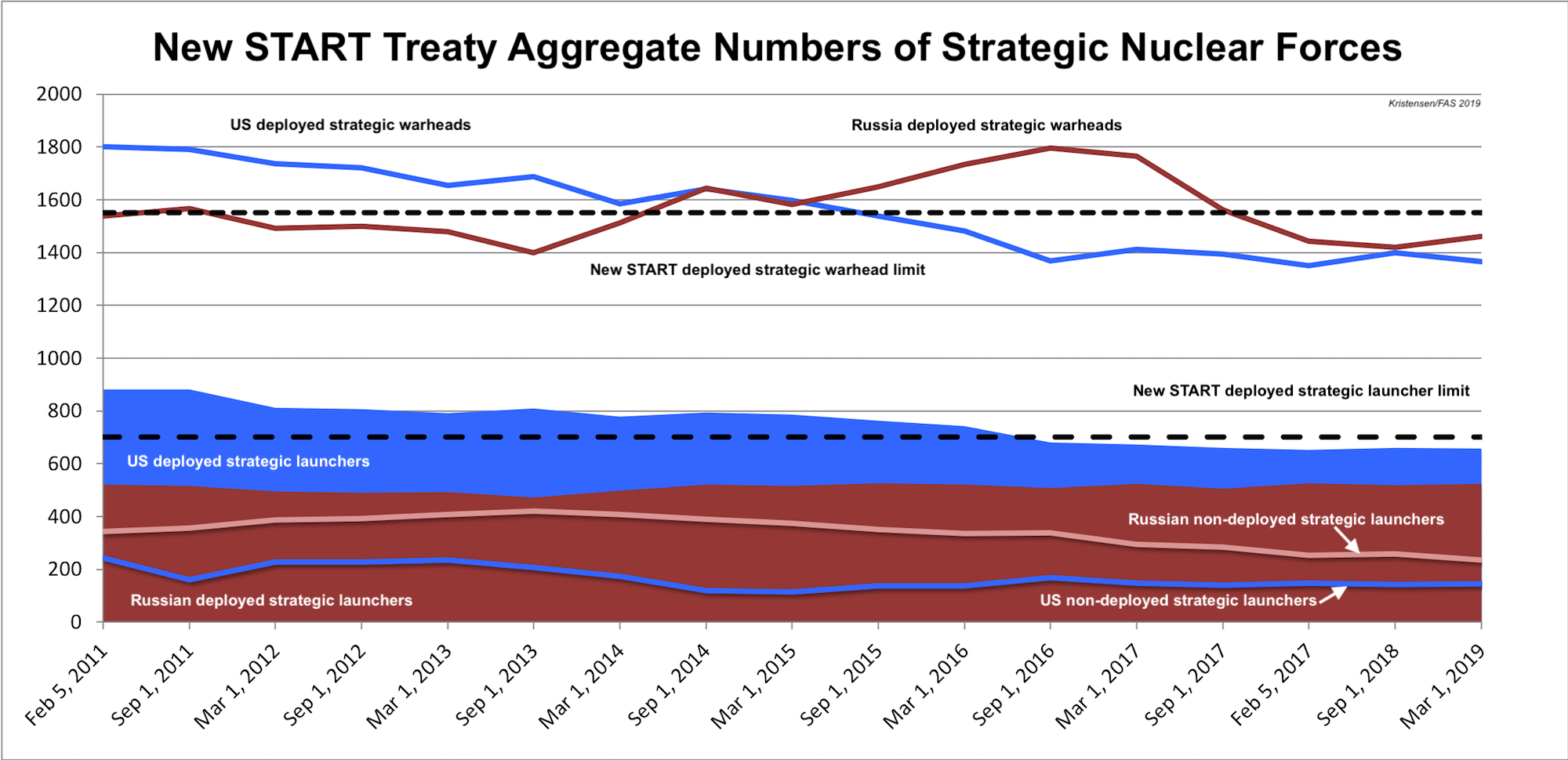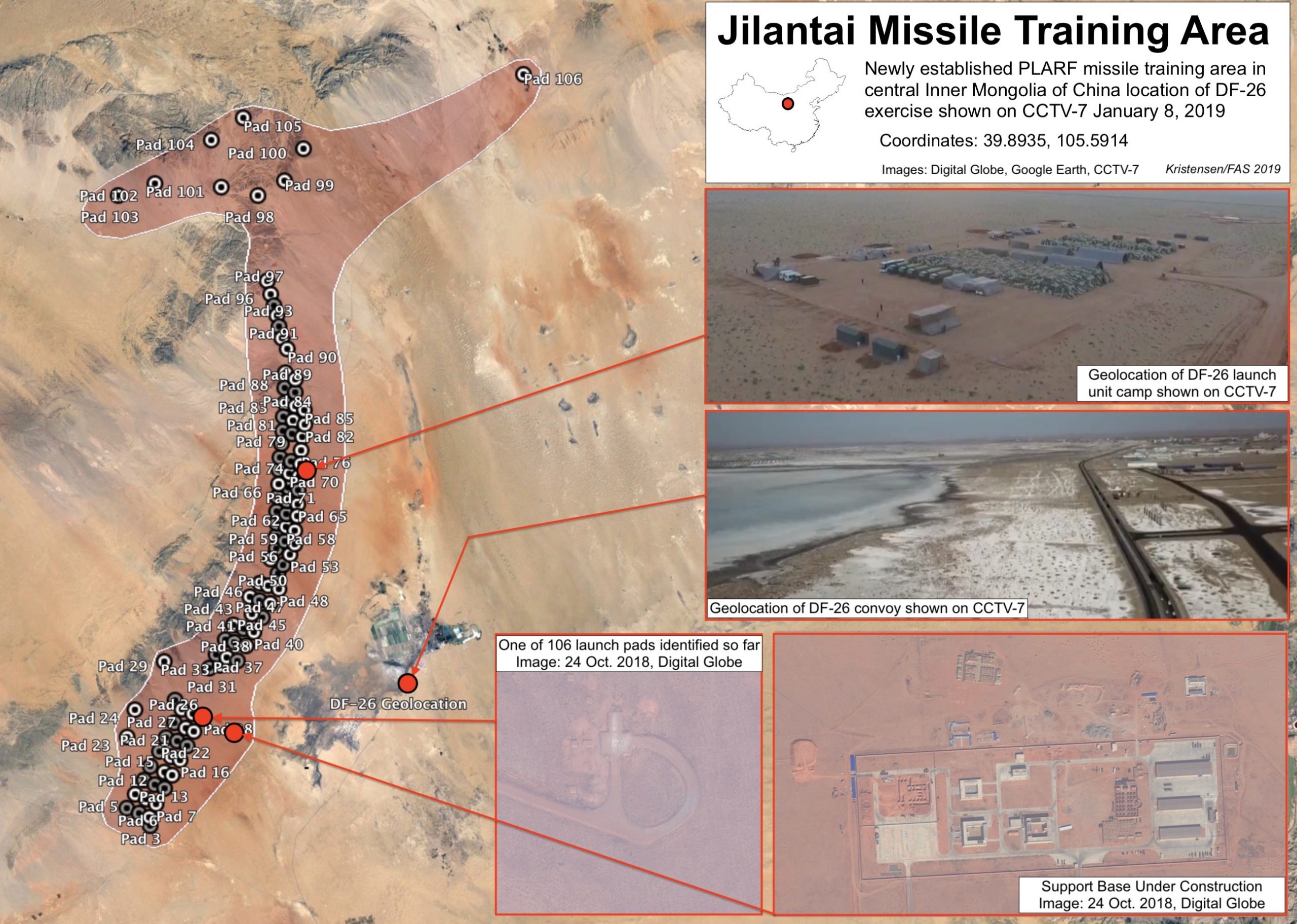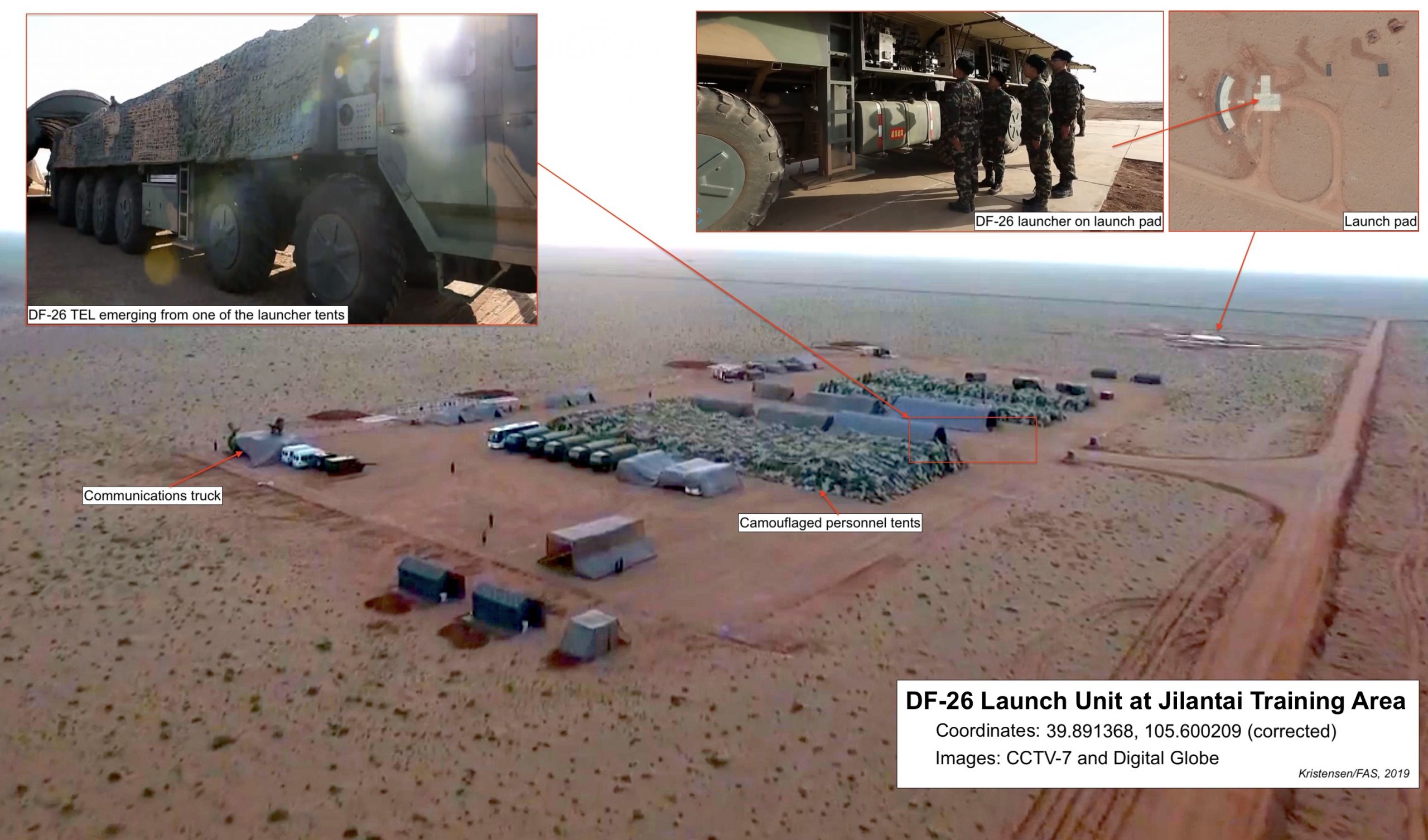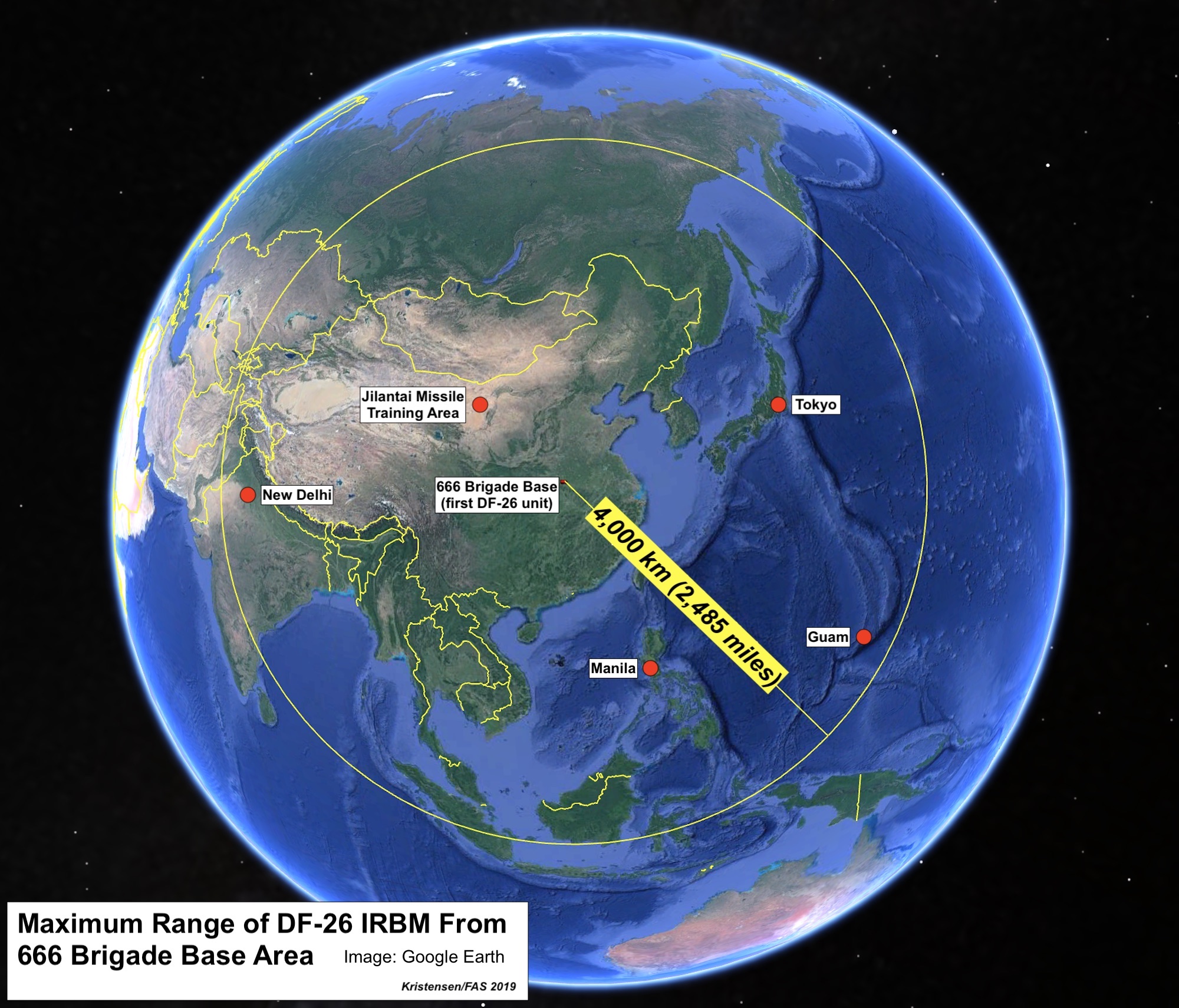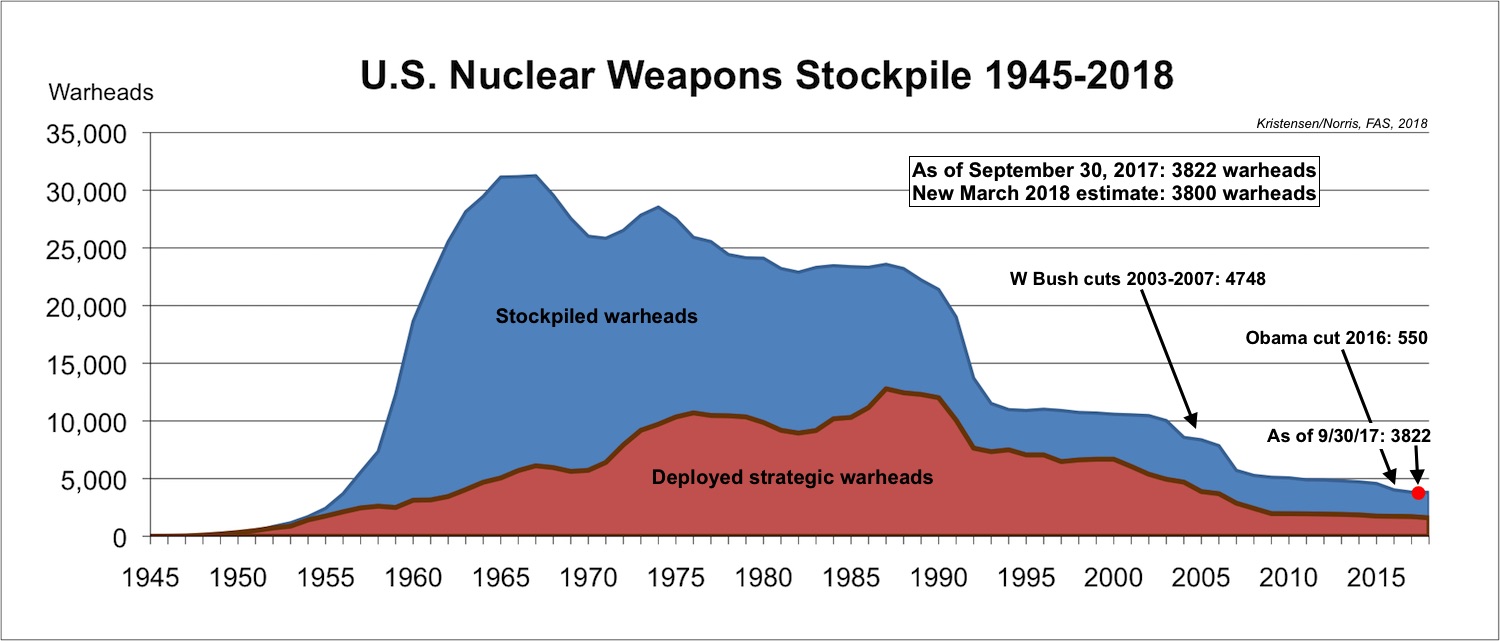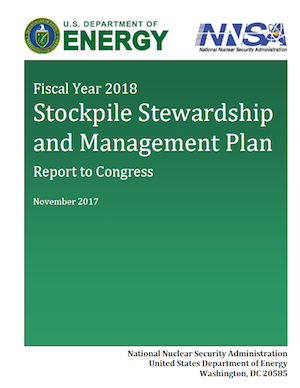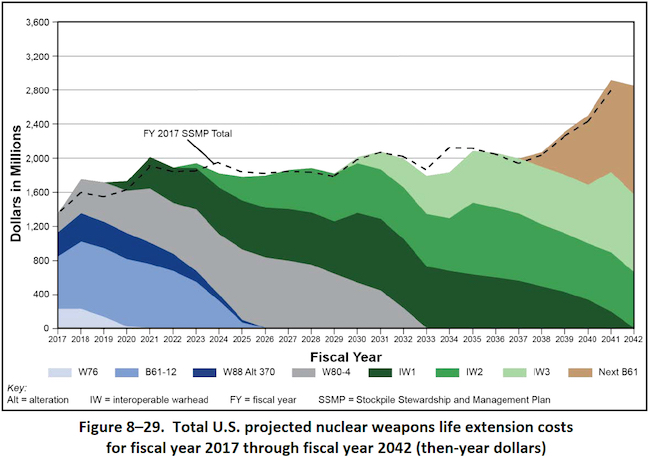Despite Obfuscations, New START Data Shows Continued Value Of Treaty
The latest set of New START treaty aggregate data released by the US State Department shows Russia and the United States continue to abide by the limitations of the New START treaty. The data shows that Russia and the United States combined have cut a total of 429 strategic launchers since February 2011, reduced the number of deployed launchers by 223, and reduced the number of warheads attributed to those launchers by 511.
The good news comes despite efforts by officials in Moscow and Washington to create doubts about the value of New START by complaining about lack of irreversibility, weapon systems not covered by the treaty, or other unrelated treaty compliance and behavioral matters. These complaints are part of the ongoing bickering between Russia and the United States and appear intended – they certainly have that effect – to create doubt about the value of extending New START for five years beyond 2021.
Playing politics with New START is irresponsible and counterproductive. While the treaty has facilitated coordinated and verifiable reductions and provides for on-site inspections and a continuous exchange of notifications about strategic offensive nuclear forces, the remaining arsenals are large, undergoing extensive modernizations, and demand continued limits and verification.
By the Numbers
The latest New START data shows that the United States and Russia combined, as of March 1st, 2019, deployed a total of 1,180 strategic launchers (long-range ballistic missiles and heavy bombers) with a total of 2,826 warheads attributed to them (see chart below). These two arsenals constitute more strategic launchers and warheads than all the world’s other seven nuclear-armed states possess combined.
For Russia, the data shows 524 deployed strategic launchers with 1,461 warheads. That’s a slight increase of 7 launchers and 41 warheads compared with September 2018. Russia is currently 176 launchers and 89 warheads below the treaty limit for deployed strategic weapons.
The United States deploys 656 strategic launchers with 1,365 warheads attributed to them, or a slight decrease of 3 launchers and 33 warheads compared with September 2018. The United States is currently 44 launchers and 185 warheads below the treaty limit for deployed strategic weapons.
These increases and decreases since September 2018 are normal fluctuations in the arsenals due to maintenance and upgrades and do not reflect an increase or decrease of the threat level.
It is important to remind, that the Russian and US nuclear forces reported under New START are only a portion of their total stockpiles of nuclear weapons, currently estimated at 4,350 for Russia and 3,800 for the United States (6,850 and 6,460, respectively, if also counting retired warheads awaiting dismantlement).
Build-Up, What Build-Up
Despite frequent claims by some about a Russian nuclear “buildup,” the New START data does not show such a development. On the contrary, it shows that Russia’s strategic offensive nuclear force level – despite ongoing modernization – is relatively steady. Deteriorating relations have so far not caused Russia (or the United States) to increase strategic force levels or slowed down the reductions required by New START. On the contrary, both sides seem to be continuing to structure their central strategic nuclear forces in accordance with the treaty’s limitations and intentions.
That said, both countries are working on modifications to their strategic nuclear arsenals. Russia has been working for a long time – even before New START was signed – to develop exotic intercontinental-range weapons to overcome US ballistic missile defense systems. These exotic weapons, which are not deployed or covered by the treaty, include a ground-launched nuclear-powered cruise missile (Burevestnik) and a submarine-launched torpedo-like drone (Poseidon). An ICBM-launched glide-vehicle commonly known as Avangard is close to initial deployment but would likely supplement the current ICBM force rather than increasing it. The new weapons are limited in numbers and insufficient to change the overall strategic balance or challenge extension of New START. The treaty provides for adding new weapon types if agreed by the two parties, although neither side has formally proposed to do so.
Russia is not at an advantage in terms of overall strategic nuclear forces, nor does it appear to try to close the significant gap the New START data shows exists in the number of strategic launchers – 132 in US favor by the latest count. To put things in perspective, 132 launchers is nearly the equivalent of a US ICBM wing, more than six Ohio-class ballistic missile submarines, or twice the size of the entire US nuclear bomber fleet. If the tables were turned, US officials and hardliners would be screaming about a disadvantage. Astoundingly, some are still trying to make that case despite the US advantage. Given the launcher asymmetry, one could also suspect that Russia might seek to retain more non-deployed launchers for potential redeployment to be able to rapidly increase the force if necessary. Instead, the New START data shows that Russia has continued to decrease its non-deployed launchers by 185 since the peak of 421 in 2013.
Russian strategic modernization has been slower than expected with delays and less elaborate base upgrades and is stymied by a weak economy and corruption in government and defense industry. Russia is compensating for this asymmetry by maximizing warhead loadings on its new missiles, but the New START data indicates that Russia since 2016 has been forced to reduce the normal warhead loading on some of its ballistic missiles in order to meet the treaty limit for deployed warheads. This demonstrates New START has a real constraining effect on Russian strategic forces.
Having said that, Russia could – like the United States – upload large numbers of non-deployed nuclear warheads onto deployed launchers if a decision was made to break out of the New START limits. Those launchers would include initially bombers, then sea-launched ballistic missiles, and in the longer term the ICBMs.
The United States has dismantled and converted more launchers than Russia because the United States had more of them when the treaty was signed, not because Washington was handed a “bad deal,’ as some defense hardliners have claimed. But Russia has complained – including in an unprecedented letter to the US Congress – that it is unable to verify that launchers converted by the US can’t be returned to nuclear use. The New START treaty does not require irreversibility and the US insists conversions have been carried out as required by the treaty rules that Russia agreed to. Discussions continue in Bilateral Consultative Committee (BCC).
Verification and Notifications
Although not included in the formal aggregate data, the State Department has also disclosed the total number of inspections and notifications conducted under the treaty. Since February 2011, this has included 294 onsite inspections (3 each since September) and 17,516 notifications (up about 1,100 since September 2018). This data flow is essential to providing confidence and reassurance that the strategic force level of the other side indeed is what they say it is. It also provides each side invaluable insight into structural and operational matters that complements and expands what is possible to ascertain with national technical means.

US SSBN in drydock. Russia says it cannot verify conversion of US strategic launchers. Click on image to see full size.
Conclusions and Recommendations
Although bureaucrats and Cold Warriors in both Washington and Moscow currently are busy raising complaints and uncertainties about the New START treaty, there is no way around the basic fact: the treaty is strongly in the national security interest of both countries – as well as that of their allies.
But the treaty expires in February 2021 and the two sides could – if their leadership was willing to act – extend it with the stroke of a pen.
Unfortunately, Russian claims that it is incapable of confirming US conversion of strategic launchers, US complaints that new exotic Russian weapons circumvent the treaty, Russia’s violation and the US decision to withdraw from the INF treaty, as well as the growing political animosity and bickering between East and West, have combined to increase the pressure on New START and put extension in doubt.
The idea that the INF debacle somehow requires a reevaluation of the value of New START is ridiculous. INF regulates regional land-based missiles whereas New START regulates the core strategic nuclear forces. Why would anyone in either country in their right mind jeopardize limits and verification of strategic forces that threaten the survival of the nation over a disagreement about regional forces that cannot? That seems to be the epidemy of irresponsible behavior.
And the disagreements about conversion of launchers and need to add new intercontinental forces to the treaty can and should be resolved within the BCC.
But it all captures well the danger of Cold War mindsets where nationalistic bravado and chest-thumping override deliberate rational strategy for the benefit of national and international security. Bad times are not an excuse for sacrificing treaties but reminders of the importance of preserving them. Arms limitation treaties are not made with friends (you don’t have to) but with potential adversaries in order to limit their offensive nuclear forces and increase transparency and verification. If officials focus on complaining and listing problems, well guess what, that’s what we’re going to get.
Additional information:
This publication was made possible by generous contributions from the Carnegie Corporation of New York, the John D. and Catherine T. MacArthur Foundation, the New Land Foundation, the Ploughshares Fund, and the Prospect Hill Foundation. The statements made and views expressed are solely the responsibility of the authors.
Chinese DF-26 Missile Launchers Deploy To New Missile Training Area
[Updated Jan 31, 2019] Earlier this month, the Chinese government outlet Global Times published a report that a People’s Liberation Army Rocket Force (PLARF) unit with the new DF-26 intermediate-range ballistic missile had carried out an exercise in the “Northwest China’s plateau and desert areas.” The article made vague references to a program previously aired on China’s CCTV-7 that showed a column of DF-26 launchers and support vehicles driving on highways, desert roads, and through mountain streams.
As it turns out, the exercise may have been west of Beijing, but the actual location is in upper Central China. Several researchers (for example Sean O’Connor) have been attempting to learn more about the unit. By combining scenes from the CCTV-7 program with various satellite imagery sources, I was able to geolocate the DF-26s to the S218 highway (39.702137º, 105.731469º) outside the city of Jilantai (Jilantaizhen) roughly 100 km north of Alxa in the Inner Mogolia province in the northern part of central China (see image below).
The DF-26s appear to have been visiting a new missile training area established by PLARF since 2015. By combining use of Google Earth, Planet, and Terra Server, each of which has unique capabilities needed to scan vast areas and identifying individual facilities, as well as analyzing images purchased from Digital Globe, I have so far been able to identify more than 100 launch pads used by launchers and support vehicles during exercises, a support base, a landing strip, and at least eight launch unit camp sites covering an area of more than 1,000 square kilometers (400 square miles) along a 90-kilometer (55-mile) corridor (see image below). A Google Earth placemark file (kml) with all these locations is available for download here.
The Chinese military has for decades been operating a vast missile training area further west in the Qinghai province, which I profiled in an article a decade ago. They also appear to operate a training area further west near Korla (Beyingol). The best unclassified guide for following Chinese missile units is, of course, the indispensable PLA Rocket Force Leadership and Unit Reference produced by Mark Stokes at the Project 2049 Institute.
It is not clear if the DF-26 unit that exercised in the Jilantai training area is or will be permanently based in the region. It is normal for Chinese missile units to deploy long distances from their home base for training. The first brigade (666 Brigade) is thought to be based some 1,100 kilometers (700 miles) to the southeast near Xinyang in southern Henan province. This was not the first training deployment of the brigade. The NASIC reported in 2017 that China had 16+ DF-26 launchers and it is building more. The CCTV-7 video shows an aerial view of a launch unit camp with TEL tents, support vehicles, and personnel tents. A DF-26 is shown pulling out from under a camouflage tent and setting up on a T-shaped concrete launch pad (see image below). More than 100 of those pads have been identified in the area.
The support base at the training area does not have the outline of a permanent missile brigade base. But several satellite images appear to show the presence of DF-16, DF-21, and DF-26 launchers at this facility. One image purchased from Digital Globe and taken by one of their satellites on October 24, 2018, shows the base under construction with what appears to be two DF-16 launchers (h/t @reutersanders) parked between two garages. Another photo taken on August 16, 2017, shows what appears to be 22 DF-21C launchers with a couple of possible DF-26 launchers as well (see below).
The DF-26, which was first officially displayed in 2015, fielded in 2016, and declared in service by April 2018, is an intermediate-range ballistic missile launched from a six-axle road-mobile launchers that can deliver either a conventional or nuclear warhead to a maximum distance of 4,000 kilometers (2,485 miles). From the 666 Brigade area near Xinyang, a DF-26 IRBM could reach Guam and New Delhi (see map below). China has had the capability to strike Guam with the nuclear DF-4 ICBM since 1980, but the DF-4 is a moveable, liquid-fuel missiles that takes a long time to set up, while the DF-26 is a road-mobile, solid-fuel, dual-capable missile that can launch quicker and with greater accuracy. Moreover, DF-26 adds conventional strike to the IRBM range for the first time.
The 666 Brigade is in range of U.S. sea- and air-launched cruise missiles as well as ballistic missiles. But the DF-26 is part of China’s growing inventory of INF-range missiles (most of which, by far, are non-nuclear), a development that is causing some in the U.S. defense community to recommend the United States should withdraw from the INF treaty and deploy quick-launch intermediate-range ballistic missiles in the Western Pacific. Others (including this author) disagree, saying current and planned U.S. capabilities are sufficient to meet national security objectives and that engaging China in an INF-race would make things worse.
See also: FAS Nuclear Notebook on Chinese Nuclear Forces, 2018
This publication was made possible by a grant from the Carnegie Corporation of New York, the John D. and Catherine T. MacArthur Foundation, the New Land Foundation, and the Ploughshares Fund. The statements made and views expressed are solely the responsibility of the author.
Mixed Messages On Trump’s Missile Defense Review
President Trump personally released the long-overdue Missile Defense Review (MDR) today, and despite the document’s assertion that “Missile Defenses are Stabilizing,” the MDR promotes a posture that is anything but.
Firstly, during his presentation, Acting Defense Secretary Shanahan falsely asserted that the MDR is consistent with the priorities of the 2017 National Security Strategy (NSS). The NSS’ missile defense section notes that “Enhanced missile defense is not intended to undermine strategic stability or disrupt longstanding strategic relationships with Russia or China.” (p.8) During Shanahan’s and President Trump’s speeches, however, they made it clear that the United States will seek to detect and destroy “any type of target,” “anywhere, anytime, anyplace,” either “before or after launch.” Coupled with numerous references to Russia’s and China’s evolving missile arsenals and advancements in hypersonic technology, this kind of rhetoric is wholly inconsistent with the MDR’s description of missile defense being directed solely against “rogue states.” It is also inconsistent with the more measured language of the National Security Strategy.
Secondly, the MDR clearly states that the United States “will not accept any limitation or constraint on the development or deployment of missile defense capabilities needed to protect the homeland against rogue missile threats.” This is precisely what concerns Russia and China, who fear a future in which unconstrained and technologically advanced US missile defenses will eventually be capable of disrupting their strategic retaliatory capability and could be used to support an offensive war-fighting posture.
Thirdly, in a move that will only exacerbate these fears, the MDR commits the Missile Defense Agency to test the SM-3 Block IIA against an ICBM-class target in 2020. The 2018 NDAA had previously mandated that such a test only take place “if technologically feasible;” it now seems that there is sufficient confidence for the test to take place. However, it is notable that the decision to conduct such a test seems to hinge upon technological capacity and not the changes to the security environment, despite the constraints that Iran (which the SM-3 is supposedly designed to counter) has accepted upon its nuclear and ballistic missile programs.
Fourthly, the MDR indicates that the United States will look into developing and fielding a variety of new capabilities for detecting and intercepting missiles either immediately before or after launch, including:
- Developing a defensive layer of space-based sensors (and potentially interceptors) to assist with launch detection and boost-phase intercept.
- Developing a new or modified interceptor for the F-35 that is capable of shooting down missiles in their boost-phase.
- Mounting a laser on a drone in order to destroy missiles in their boost-phase. DoD has apparently already begun developing a “Low-Power Laser Demonstrator” to assist with this mission.
There exists much hype around the concept of boost-phase intercept—shooting down an adversary missile immediately after launch—because of the missile’s relatively slower velocity and lack of deployable countermeasures at that early stage of the flight. However, an attempt at boost-phase intercept would essentially require advance notice of a missile launch in order to position US interceptors within striking distance. The layer of space-based sensors is presumably intended to alleviate this concern; however, as Laura Grego notes, these sensors would be “easily overwhelmed, easily attacked, and enormously expensive.”
Additionally, boost-phase intercept would require US interceptors to be placed in very close proximity to the target––almost certainly revealing itself to an adversary’s radar network. The interceptor itself would also have to be fast enough to chase down an accelerating missile, which is technologically improbable, even years down the line. A 2012 National Academy of Sciences report puts it very plainly: “Boost-phase missile defense—whether kinetic or directed energy, and whether based on land, sea, air, or in space—is not practical or feasible.”
Overall, the Trump Administration’s Missile Defense Review offers up a gamut of expensive, ineffective, and destabilizing solutions to problems that missile defense simply cannot solve. The scope of US missile defense should be limited to dealing with errant threats—such as an accidental or limited missile launch—and should not be intended to support a broader war-fighting posture. To that end, the MDR’s argument that “the United States will not accept any limitation or constraint” on its missile defense capabilities will only serve to raise tensions, further stimulate adversarial efforts to outmaneuver or outpace missile defenses, and undermine strategic stability.
During the upcoming spring hearings, Congress will have an important role to play in determining which capabilities are actually necessary in order to enforce a limited missile defense posture, and which ones are superfluous. And for those superfluous capabilities, there should be very strong pushback.
New START Numbers Show Importance of Extending Treaty
By Hans M. Kristensen
The latest New START treaty aggregate numbers published by the State Department earlier today show a slight increase in U.S. deployed strategic forces and a slight decrease in Russian deployed strategic forces over the past six months.
The data shows that the United States and Russia as of September 1, 2018 combined deployed a total of 1,176 strategic launchers with 2,818 attributed warheads. In addition, the two countries also had a total of 399 non-deployed launchers for a total of 1,576 strategic launchers.
Combined, the two countries have reduced their deployed strategic forces by 227 launchers and 519 warheads since 2011.
The warheads counted by the New START treaty are only a portion of the total warhead numbers possessed by the two countries. The Russian military stockpile includes an estimated 4,350 warheads while the United States has about 3,800.
The release of the data comes at a particular important time when the United States and Russia are considering whether to extend the New START treaty for another five years beyond 2021 when it expires. The treaty is under attack from defense hawks in Congress and the Trump administration is weighing whether to extend New START in light of Russia’s alleged violation of other agreements.
The data reaffirms that Russia, despite its modernization program, is not increasing its strategic nuclear forces but continue to limit them in compliance with the limitations of New START. In our latest Nuclear Notebook on Russia forces, we estimate that the New START limits recently caused Russia to reduce the number of warheads deployed on several of its strategic missiles.
Deployed Warheads
The data shows that the United States as of September 1 deployed 1,398 warheads on its strategic launchers. This is an increase of 48 warheads since February. Since 2011, the United States has offloaded 402 attributed warheads from its force.
The 1,398 is not the actual number of warheads deployed because bombers are artificially attributed one weapon each even though they don’t carry any weapons in peacetime. The actual number of deployed warheads is closer to 1,350.
Russia was counted with 1,420 deployed strategic warheads, a reduction of 24 warheads from February, and a total of 117 attributed warheads offloaded since 2011. Russian bombers also do not carry weapons so the Russian number is probably closer to 1,370 deployed strategic warheads.
These changes don’t reflect one country building up and the other reducing its forces, but are caused by fluctuations when launchers move in and out of maintenance or old launchers are retired or new ones added.
Deployed Launchers
The data shows the United States deployed 659 strategic launchers, an increase of 7 since February, and a total reduction of 223 launchers since 2011.
Russia deployed 517 strategic launchers, 142 fewer than the United States. That is 10 launchers less than in February, and a total reduction of 4 launchers since 2011.
Non-Deployed Launchers
The data also shows how many non-deployed launchers the two countries have. These are either empty launchers that are in reserve or overhaul or have not yet been destroyed.
The United States had 141 non-deployed launchers, which included empty ICBM silos, bombers in overhaul, and empty missile tubes on SSBNs in overhaul or refit. Since 2011, the United States has destroyed 101 non-deployed launchers.
Russia was counted with 258 non-deployed launchers. This includes empty ICBM silos, empty missile tubes on SSBNs in overhaul, and bombers in overhaul. Since 2011, Russia has destroyed 86 non-deployed launchers.
Essential Verification In Troubled Times
The treaty includes an important verification system that requires the United States and Russia to exchange vast amounts of data about the numbers and operations of their strategic forces and allows them to inspect each other’s facilities.
Since the treaty entered into effect in 2011, the two countries have exchanged 16,444 notifications about launcher movements and telemetry data; 1,603 since February this year.
Data released by the State Department shows that U.S. and Russian inspectors have conducted a total of 277 on-site inspections of each other’s strategic forces and facilities since the treaty entered into force in 2011. So far this year, U.S. officials have inspected Russian facilities 13 times compared with 12 Russian inspections of U.S. facilities.
The combined effects of limiting deployed strategic forces and the verification activities requiring professional collaboration between U.S. and Russian officials, mean that the New START treaty has become a beacon of light in the otherwise troubled relations between Russia and the United States, far more so than anyone could have predicted in 2010 when the treaty was signed.
Other background information:
- Russia nuclear forces, 2018
- US nuclear forces, 2018
- Status of world nuclear forces, 2018
- After Seven Years of Implementation, New START Treaty Enters Into Effect
This publication was made possible by a grant from the Carnegie Corporation of New York, the John D. and Catherine T. MacArthur Foundation, the New Land Foundation, and the Ploughshares Fund. The statements made and views expressed are solely the responsibility of the author.
USAF: Implementing Arms Control Treaties
The implementation of arms control agreements by the Air Force is detailed in a newly updated directive.
The directive addresses Air Force obligations under New START, US-IAEA Safeguard Agreements, the Chemical Weapons Convention, and the Biological Weapons Convention.
See Implementation of, and Compliance with, Treaties Involving Weapons of Mass Destruction, Air Force Instruction 16-608, September 7, 2018.
Air Force officials are directed to make certain that even their most tightly secured special access programs are in compliance with international obligations. But they are also required to protect information about such programs from “unnecessary or inadvertent” exposure during verification activities.
Nuclear Weapons Maintenance as a Career Path
The US Air Force has published new guidance for training military and civilian personnel to maintain nuclear weapons as a career specialty.
See Nuclear Weapons Career Field Education and Training Plan, Department of the Air Force, April 1, 2018.
An Air Force nuclear weapons specialist “inspects, maintains, stores, handles, modifies, repairs, and accounts for nuclear weapons, weapon components, associated equipment, and specialized/general test and handling equipment.” He or she also “installs and removes nuclear warheads, bombs, missiles, and reentry vehicles.”
A successful Air Force career path in the nuclear weapons specialty proceeds from apprentice to journeyman to craftsman to superintendent.
“This plan will enable training today’s workforce for tomorrow’s jobs,” the document states, confidently assuming a future that resembles the present.
Meanwhile, however, the Air Force will also “support the negotiation of, implementation of, and compliance with, international arms control and nonproliferation agreements contemplated or entered into by the United States Government,” according to a newly updated directive.
See Air Force Policy Directive 16-6, International Arms Control and Nonproliferation Agreements and the DoD Foreign Clearance Program, 27 March 2018.
Despite Rhetoric, US Stockpile Continues to Decline
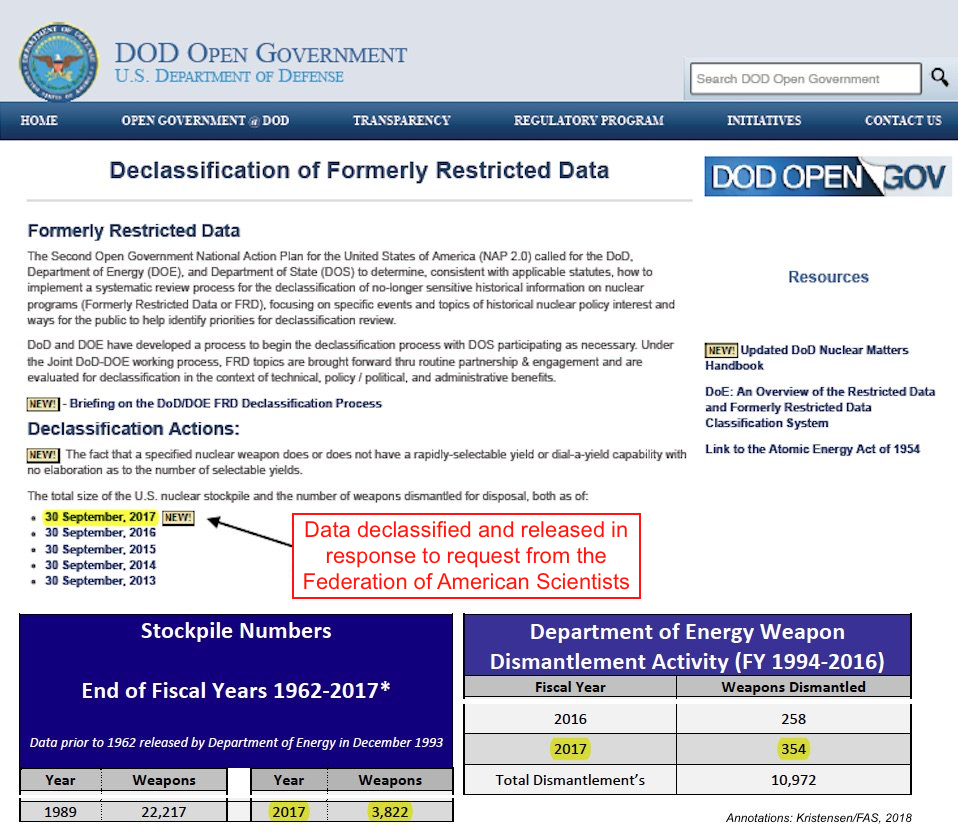
Click on image to view full size. Full document here.
By Hans M. Kristensen
The US nuclear weapons stockpile dropped to 3,822 warheads by September 2017 – down nearly 200 warheads from the last year of the Obama administration, according to new information released by the Department of Defense in response to a request from the Federation of American Scientists (see here for full document).
Since September 2017, the number has likely declined a little further to about 3,800 warheads as of March 2018. This is the lowest number of stockpiled warheads since 1957 (see graph), although the nuclear weapons and the conventional capabilities that make up today’s arsenal are vastly more capable than back then.
The new data also shows that the United States dismantled 354 warheads during the period October 2016 to September 2017 – the highest number of warheads dismantled in a single year since 2009. Since 1994, the United States has dismantled nearly 11,000 nuclear warheads.
The continued reductions are not the result of new arms control agreements or a change in defense planning, but reflects a longer trend of the Pentagon working to reduce excess numbers of warheads while upgrading the remaining weapons. This trend is as old as the Post Cold war era.
The majority of the warheads retired during the Trump administration’s first year probably included W76-0 warheads no longer needed as feedstock for the Navy’s W76-1 life-extension program.
The reduction has happened despite tensions with Russia, bombastic nuclear statements by President Donald Trump, and Nuclear Posture Review assertions about return of Great Power competition and need for new nuclear weapons.
The apparent disconnect between rhetoric and the stockpile trend illustrates that nuclear deterrence and national security are less about the size of the arsenal than what it, and the overall defense posture, can do and how it is postured.
Although defense hawks home and abroad will likely seize upon the reduction and argue that it undermines deterrence and reassurance, the reality is that it does not; the remaining arsenal is more than sufficient to meet the requirements for national security and international obligations. On the contrary, it is a reminder that there still is considerable excess capacity in the current nuclear arsenal beyond what is needed.
President Trump recently said he expected to meet Russian President Vladimir Putin “in the not-too-distant future to discuss the arms race,” which Trump added “is getting out of control…” He is right. In such discussions he should urge Russia to follow the U.S. example and also disclose the size of its nuclear warhead stockpile, agree to extend the New START treaty for five years, work out a roadmap to resolve INF Treaty compliance issues, and develop new agreements to regulate nuclear and advanced conventional forces.
There is much work to be done.
Additional information:
Declassified stockpile numbers.
Recent FAS Nuclear Notebook on US nuclear forces (written before the new stockpile information became available).
For an overview of all nuclear-armed states, see our Status of World Nuclear Forces.
This publication was made possible by a grant from the Carnegie Corporation of New York, the John D. and Catherine T. MacArthur Foundation, the New Land Foundation, and the Ploughshares Fund. The statements made and views expressed are solely the responsibility of the author.
Crowdsourcing the Verification of Nuclear Safeguards
The possibility of mobilizing members of the public to collect information — “crowdsourcing” — to enhance verification of international nuclear safeguards is explored in a new report from Sandia National Laboratories.
“Our analysis indicates that there are ways for the IAEA [International Atomic Energy Agency] to utilize data from crowdsourcing activities to support safeguards verification,” the authors conclude.
But there are a variety of hurdles to overcome.
“Some implementations of crowdsourcing for safeguards are legally or ethically uncertain, and must be carefully considered prior to adoption.”
Crowdsourced information, like other information, has to be independently verified, particularly since it is susceptible to error, manipulation and deception.
The report builds on previous work cited in a bibliography. See Power of the People: A Technical, Ethical and Experimental Examination of the Use of Crowdsourcing to Support International Nuclear Safeguards Verification by Zoe N. Gastelum, et al, Sandia National Laboratories, October 2017.
After Seven Years of Implementation, New START Treaty Enters Into Effect
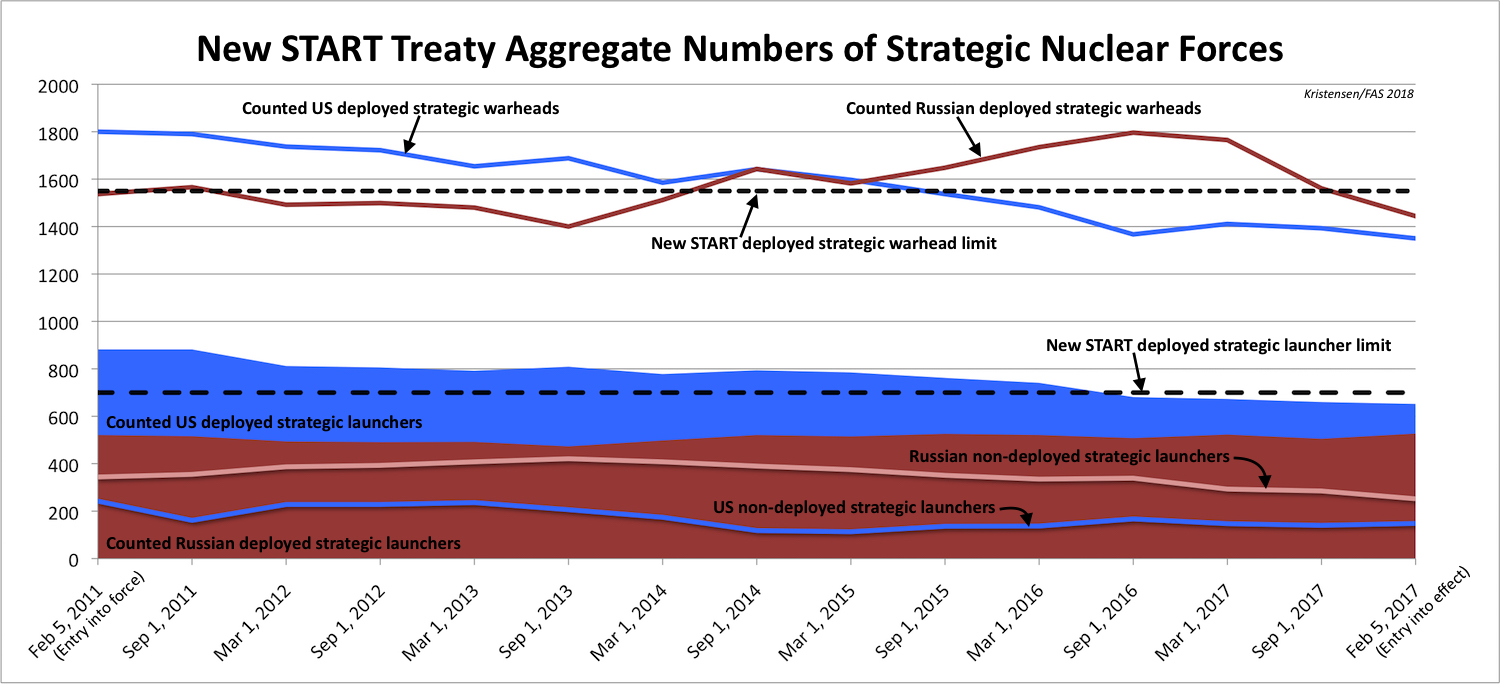
Russia and the United States are currently in compliance with the treaty limits of the New START treaty. This table summarizes the evolution of the three weapons categories reported between 2011 and 2018. (Click on graph to view full size.)
By Hans M. Kristensen
[Note: On February 22nd, the US State Department published updated numbers instead of relying on September 2017 numbers. This blog and tables have been updated accordingly.]
Seven years after the New START treaty between Russia and the United States entered into force in 2011, the treaty entered into effect on February 5. The two countries declared they have met the limits for strategic nuclear forces.
At a time when relations between the two countries are at a post-Cold War low and defense hawks in both countries are screaming for new nuclear weapons and declaring arms control dead, the achievement couldn’t be more timely or important.
Achievements by the Numbers
The declarations show that Russia and the United States currently deploy a combined total of 2,794 warheads on 1,179 deployed strategic launchers. An additional 400 non-deployed launchers are empty, in overhaul, or awaiting destruction.
Compare that with the same categories in 2011: 3,337 warheads on 1,403 deployed strategic launchers with an additional 586 non-deployed launchers.
In other words, since 2011, the two countries have reduced their combined strategic forces by: 543 deployed strategic warheads, 224 deployed strategic launchers, and 186 non-deployed strategic launchers. These are modest reductions of about 16 percent over seven years for deployed forces (see chart below).
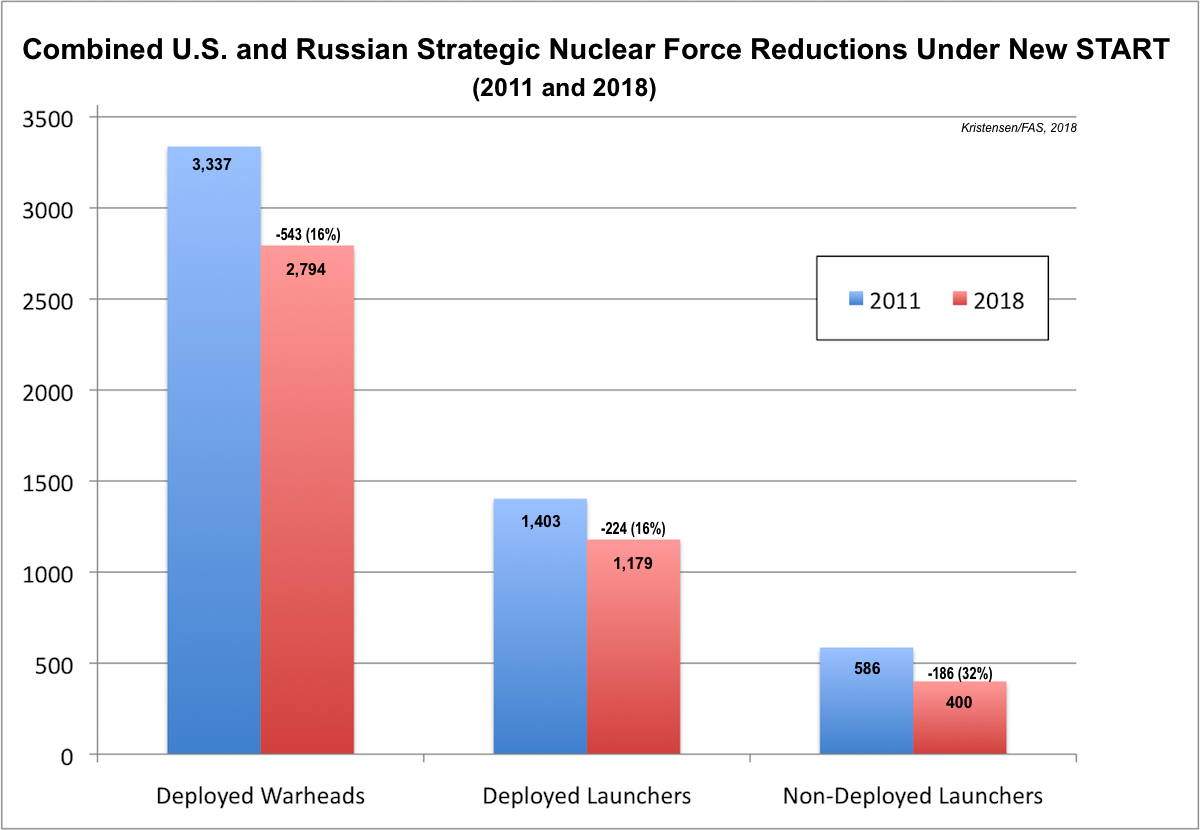
The New START data shows the world’s two largest nuclear powers have reduced their deployed strategic force by about 15 percent over the past seven years. (Click on graph to view full size.)
The Russian statement reports 1,444 warheads on 527 deployed strategic launchers with another 392 non-deployed launchers.
That means Russia since 2011 has reduced its deployed strategic warheads by 93, or only 6 percent. The number of deployed launchers has increased a little, by 6, while non-deployed launchers have declined by 80, or 24 percent (see chart below).
The Russian numbers hide an important new development: In order to meet the New START treaty limit, the warhead loading on some Russian strategic missiles has been reduced. The details of the download are not apparent from the limited data published by Russia. I am currently working on developing the estimate for how the download is distributed across the Russian strategic forces. The analysis will be published in a subsequent blog, as well in our next FAS Nuclear Notebook and in the 2018 SIPRI Yearbook.
The US statement lists 1,350 warheads on 652 deployed strategic launchers, and 148 non-deployed launchers.
That means the United States since 2011 has reduced its deployed strategic warheads by 450, or 25 percent. The number of deployed launchers has been reduced by 230, or 26 percent, while the number of non-deployed launchers had declined by 94, or 39 percent (see chart below).
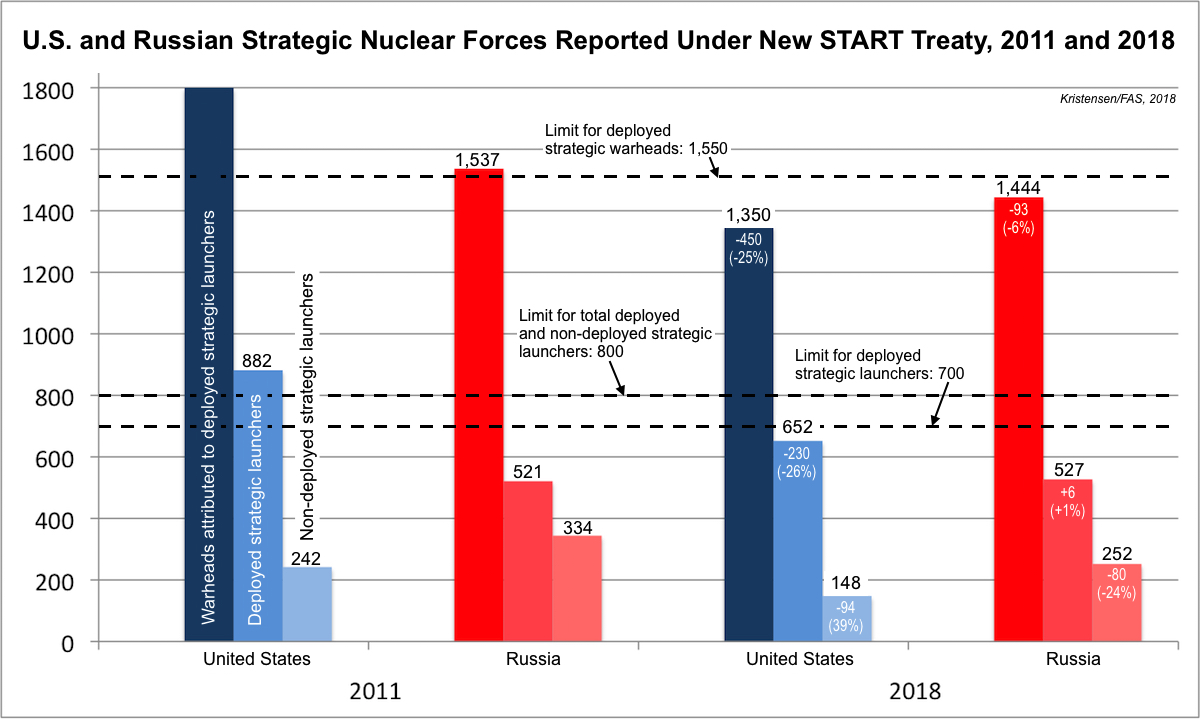
US and Russian strategic force structures differ significantly. As a result, the reductions under New START have affected the two countries differently. Russia has significantly fewer launchers so rely on great warhead-loading to maintain rough overall parity. (Click on chart to view full size.)
In Context
The reason for the different reductions is, of course, that the United States in 2011 had significantly more warheads and launchers deployed than Russia. During the New START negotiations, the US military insisted on a higher launcher limit than proposed by Russia. So while Russia by the latest count has 94 deployed warheads more than the United States, the United States enjoys a sizable advantage of 125 deployed strategic launchers more than Russia. Those extra launchers have a significant warhead upload capacity, a potential treaty breakout capability that Russian officials often complain about.
So despite the importance of the New START treaty and its achievements, not least its important verification regime, the declared numbers are a reminder of how far the two nuclear superpowers still have to go to reduce their unnecessarily large nuclear forces. Ironically, because the US military insisted on a higher launcher limit, Russia could – if it decided to do so, although that seems unlikely – build up its strategic launchers to reduce the US advantage, and still be in compliance with the treaty limits. The United States, in contrast, is at full capacity.
But the apparent download of warheads on Russia’s strategic missiles demonstrates an important effect of New START: It actually keeps a lid on the strategic force levels.
Still, not to forget: The deployed strategic warhead numbers counted under New START represent only a portion of the total number of warheads the two countries have in the arsenals. We estimate that the deployed strategic warheads declared by the two countries represent on about one-third of the total number of warheads in their nuclear stockpiles (see here for details).
This all points to the importance of the two countries agreeing to extend the New START treaty for an additional five years before it expires in 2021. Neither can afford to abandon the only strategic limitations treaty and its verification regime. Failing this most basic responsibility would, especially in the current political climate, remove any caps on strategic nuclear forces and potentially open the door to a new nuclear arms race. The warning signs are all there: East and West are in an official adversarial relationship, increasing military posturing, modernizing and adding nuclear weapons to their arsenals, and adjusting their nuclear policies for a return to Great Power competition.
The symbolic importance of New START could not be greater!
This publication was made possible by a grant from the Carnegie Corporation of New York, the John D. and Catherine T. MacArthur Foundation, the New Land Foundation, and the Ploughshares Fund. The statements made and views expressed are solely the responsibility of the author.
New Data Shows Detail About Final Phase of US New START Treaty Reductions
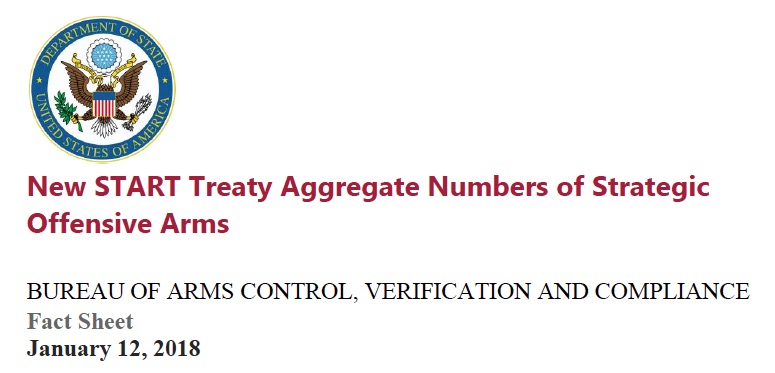
By Hans M. Kristensen
The full unclassified New START treaty data set released by State Department yesterday shows that the US reduction of its nuclear forces to meet the treaty limit had been completed by September 1, 2017, more than four months early before the deadline next month on February 5, 2018.
The data set reveals details about how the final reduction was achieved (see below).
Unfortunately, no official detailed data is released about the Russian force adjustments under New START. Our previous analysis of the overall September 1, 2017 New START data is available here.
Submarines
During that six-month period last year, 20 ballistic missile submarine launch tubes were deactivated, corresponding to four tubes on five Ohio-class submarines. Two of those submarines were in drydock for refueling and not part of the operational force.
In total, the United States has deactivated 56 strategic missile submarine launch tubes since the New START treaty went into effect in 2011, although the first reduction didn’t begin until after September 2016 – more than five years into the treaty.

The USS Louisiana (SSBN-743) returns to Kitsap Submarine Base in Washington on October 15, 2017 after a deterrent patrol in the Pacific Ocean. The submarine carried 20 Trident II missiles with an estimated 90 nuclear warheads.
Of the 280 submarine launch tubes, only 212 were counted as deployed with as many Trident II missiles loaded. The treaty counts a missile as deployed if it is in a launch tube regardless of whether the submarine is deployed at sea. The United States has declared that it will not deploy more than 240 missiles at any time. Assuming each deployed submarine carries a full missile load, the 212 deployed missiles correspond to 10 submarines fully loaded with a total of 200 missiles. The remaining 12 deployed missiles were onboard one or two submarines loading or offloading missiles at the time the count was made.
The data shows that the 212 deployed missiles carried a total of 945 warheads, or an average of 4 to 5 warheads per missile, corresponding to 70 percent of the 1,344 deployed warheads as of September 1, 2017 (the New START count was 1,393 deployed warheads, but 49 bombers counted as 49 weapons don’t actually carry warheads, leaving 1,344 actual warheads deployed). If fully loaded, the 240 deployable SLBMs could carry nearly 2,000 warheads.
The Navy has begun replacing the original Trident II D5 missile with an upgraded version known as Trident II D5LE (LE for life-extension). The upgraded version carries the new Mk6 guidance system and the enhanced W76-1/Mk4A warhead (or the high-yield W88-0/Mk5). In the near future, according to the Trump administration’s Nuclear Posture Review (NPR), some of the missiles would be equipped with a low-yield version of the W76-1.
The Navy is developing a new fleet of 12 Columbia-class missile submarines to begin replacing the Ohio-class SSBNs in the late-2020s. The Trump NPR states that “at least” 12 will be built. Each Columbia-class SSBN, the first of which will deploy on deterrent patrol in 2031, will have 16 missile tubes for a total of 192, a reduction of one-third from the current number of SSBN tubes. Ten deployable boats will be able to carry 160 Trident II D5LE missiles with a maximum capacity of 1,280 warheads; normally they will likely carry about the same number of warheads as the current force, with an average of about 5 to 6 warheads per missile.
ICBMs
The New START data shows the United States now has just under 400 Minuteman III ICBMs in silos, down from 405 in March 2017. Normally the Air Force strides to have 400 deployed but one missile was undergoing maintenance.

A Minuteman III ICBM is removed from its silo at F.E. Warren AFB on June 2, 2017, the last to be offloaded to bring the United States into compliance with the New START treaty limits.
Although the number of deployed ICBMs had declined from 450 to 400, the total numbers of missiles and silos have not. The data shows the Air Force has the same number of missiles and silos as in March 2017 because 50 empty silos are “kept warm” and ready to load 50 non-deployed missiles if necessary. Reduction of deployed ICBMs started in 2016, five years after the New START was signed. And the actual ICBM force is the same size as when the treaty was signed.
The 399 deployed ICBMs carried 399 W78/Mk12A or W87/Mk21 warheads. Although normally loaded with only one warhead each, the Trump NPR confirms that “a portion of the ICBM force can be uploaded” if necessary. We estimate the ICBM force has the capacity to carry a maximum of 800 warheads.
An ICBM replacement program is underway to build a new ICBM (programmatically called Ground Based Strategic Deterrent) to begin replacing the Minuteman III from 2029. The new ICBM will have enhanced penetration and warhead fuzing capabilities.
Heavy Bombers
The New START data shows the US Air Force has completed the denuclearization of excess nuclear bombers to 66 aircraft. This includes 20 B-2A stealth bombers for gravity bombs and 46 B-52H bombers for cruise missiles. Only 49 of the 66 bombers were counted as deployed as of September 1, 2017. Another 41 B-52Hs have been converted to non-nuclear armament such as the conventional long-range JASSM-ER cruise missile.
The New START treaty counts each of the 66 bombers as one weapon even though each B-2A can carry up to 16 bombs and each B-52H can carry up to 20 cruise missiles. We estimate there are nearly 1,000 bombs and cruise missiles available for the bombers, of which about 300 are deployed at two of the three bomber bases.
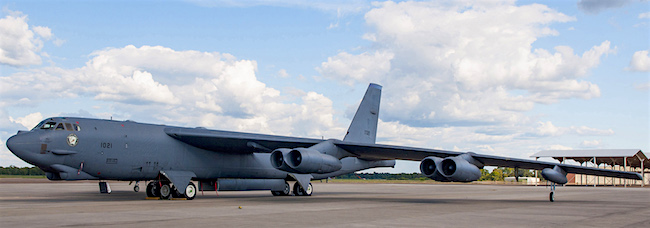
The first B-52H bomber was denuclearized under New START in September 2015. Denuclearization of excess nuclear bombers was completed in early 2017.
The bomber force was the first leg of the Triad to begin reductions under New START, starting with denuclearization of the (non-operational) B-52Gs and later excess B-52Hs. The first B-52H war denuclearized in September 2015 and the last of 41 in early 2017. Despite the denuclearization of excess aircraft, however, the actual number of bombers assigned nuclear strike missions under the strategic war plans is about the same today as in 2011.
A new heavy bomber known as the B-21 Raider is under development and planned to begin replacing nuclear and conventional bombers in the mid-2020s. The B-21 will be capable of carrying both the new B61-12 guided nuclear bomb and the new LRSO nuclear cruise missile. The Air Force wants at least 100 B-21s but can only make 66 nuclear-capable unless it plans to exceed the size of the current nuclear bomber force.
Looking Ahead
With the completion of the force reductions under New START in preparation for the treaty entering into effect on February 5, 2018, the attention now shifts to what Russia and the United States will do to extend the treaty or replace it with a follow-up treaty. With its on-site inspections and ceilings on deployed and non-deployed strategic forces, extending New START treaty for another five years ought to be a no-brainer for the two countries; anything else would increase risks to strategic stability and international security. If the treaty is allowed to expire in 2021, there will be no – none! – limits on the number of strategic nuclear forces. Unfortunately, right now neither side appears to be doing anything except to blame the other side for creating problems. It is time for Russia and the United States to get out of the sandbox and behave like responsible states by agreeing to extend the New START treaty. February 5 – when the treaty enters into effect just 23 days from now – would be a great occasion for the two countries to announce their decision to extend the treaty.
This publication was made possible by a grant from the Carnegie Corporation of New York, the John D. and Catherine T. MacArthur Foundation, the New Land Foundation, and the Ploughshares Fund. The statements made and views expressed are solely the responsibility of the author.
NNSA’s New Nuclear Stockpile Stewardship and Management Plan
The National Nuclear Security Administration (NNSA) has published its long-awaited Stockpile Stewardship and Management Plan (SSMP) for Fiscal Year 2018. The SSMP is NNSA’s 25-year strategic program of record.
I’ll leave it to others to analyze the infrastructure and fissile material portions and focus on the nuclear weapons life-extension programs (LEPs) and cost estimates.
This year’s plan shows complex LEPs that are making progress but also getting more expensive (some even with funding gaps). There are some surprises (the retirement of the B61-10 tactical bomb), some sloppiness (the stockpile table has not been updated), and some questionable depictions (how to cut stockpile in half with no effect on average warhead age).
Nonetheless, the SSMP is a unique and important document and a service to the public discussion about the scope and management of the nuclear weapons arsenal and infrastructure. NNSA deserves credit for producing and publishing the SSMP. As such, it is a reminder that other nuclear-armed states should also publish factual overviews of their nuclear weapons programs to enable fact-based discussions and counter unsubstantiated rumors and worst-case suspicion.
Nuclear Nuts and Bolts
The 2017 SSMP does not update the nuclear stockpile number but continues to use the 4,018-warhead number (as of September 2016) declassified by the Obama administration in January 2017. The Trump administration has yet to declassify any nuclear stockpile numbers. The number now is estimated at around 4,000.
The report includes a graph that shows the average warhead age in the stockpile over the years. The graph shows the age continued to increase until about 2009, at which point it slowed until leveling out in 2014, presumably because of the significant production of W76-1 warheads (an LEP resets the warhead age to zero). In 2016, the average age began to drop, presumably because of the Obama administration’s 500-warhead cut in 2016 and continued production of the W76-1.
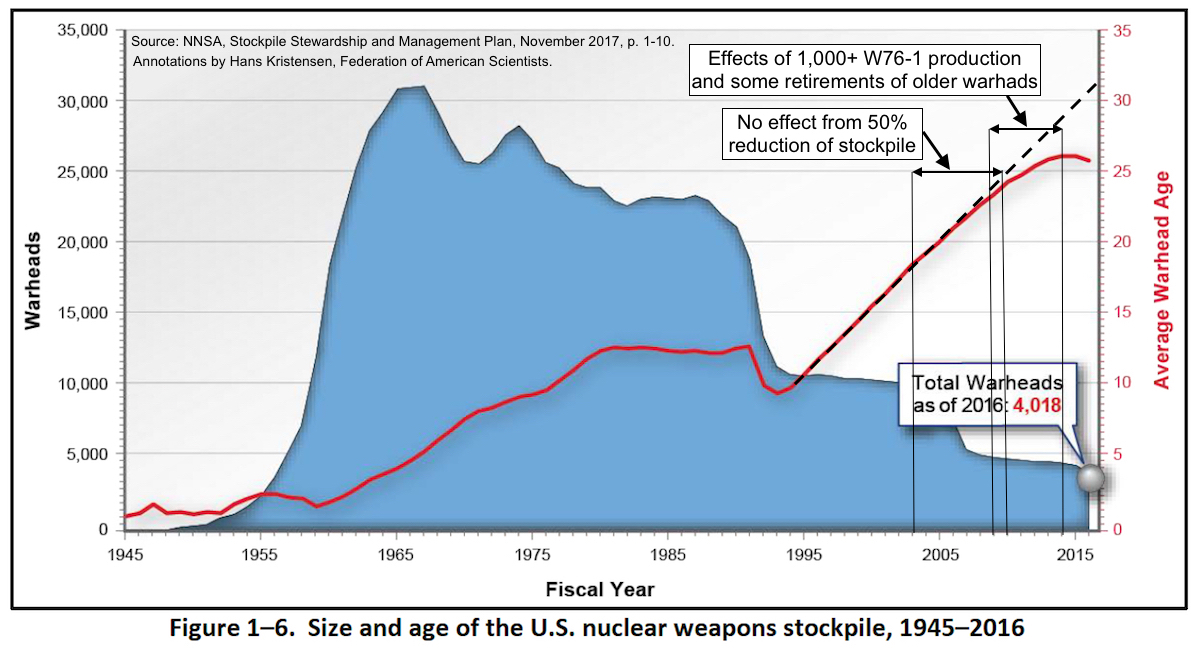
NNSA’s average warhead graph shows no effect from W Bush administration’s massive nuclear stockpile reduction. Click to view full size.
The near-continuous age increase through 2003-2007 is curious, however, because it shows hardly any visible effect from the massive stockpile reduction that occurred in those years. Why did a 50-percent reduction of the stockpile in 2003-2007 not have any effect on the average age of the remaining stockpiled warheads, when a 12-percent reduction in 2016 did? (The reductions in 1992-1994 also had a clear effect on the average warhead age.)
For that to be true, NNSA would have had to retire precisely the same portion of newer and older warheads of each warhead type, which seems odd.
The report reveals that the B61-10 tactical bomb was quietly retired in September 2016. The B61-10 has been in the inactive stockpile since 2006. The retirement is a surprise because the B61-10 is one of four B61 versions NNSA has listed to be consolidated into the B61-12. Once the B61-12 was produced and certified, so the argument was, the older versions would be retired.

The 2017 SSMP reveals that the B61-10 tactical bombs has been retired but continues to list the weapon as part of the B61-12 “consolidation” plan.
Despite the B61-10 retirement, officials have continued to include the weapon in the “consolidation” justification for the B61-12 during congressional hearings in 2017. In fact, the 2017 SSMP itself continues to include the B61-10 in its description of the B61-12 programs: “will consolidate four versions of the B61 into a single variant.”
Despite the B61-10 retirement, the SSMP’s main table of the current nuclear weapons and associated delivery vehicles still lists the bomb (another table in the report does not list the B61-10).

The SSMP report’s main table for the arsenal lists the B61-10 even though it has been retired, and gravity bombs for the B-52H even though it no longer caries them.
That table also lists the B-52H as carrying gravity bombs, even though other government documents no longer list gravity bombs assigned to the bomber. The authors appear to have done a sloppy job and simply copied the table from the 2016 SSMP without updating it.
The 2017 SSMP breaks down the extensive nuclear weapons modernization plan:
- W76-1 LEP: Complete production in 2019. With production of the W76-1/Mk4A having reached 80% and scheduled completion in 2019, Joint Flight Tests for the W76-0 has now stopped. That means it is official out of the stockpile and that all W76 war reserve warhead are now of the new W76-1 design.
- W87: Gas Transfer System (GTS) field refurbishment appears to have slipped halfway through 2019 with completion in 2024 instead of 2023.
- B61-12 LEP: First production unit in March 2020. Because program is moving ahead, the Nuclear Weapons Council in 2016 agreed to reduce surveillance tests for the B83 and B61-3, -, -7, and -10 bombs (the -10 has been retired).
- W88 Alt 370: First production unit December 2019. Cost estimate has increased by 11 percent since 2015.
- W80-4 LEP: First production unit in 2025. Will use IHE of W80-1 but with new surety features. Unique program risks due to parallel integration with LRSO missile.
- IW1 (W78/W88): Studies and engineering to begin in 2020 and production to run from 2031 to 2041, a bit shorter than depicted in the 2016 SSMP. Will use W87 pit. ICBM first production unit in 2030 for use in Mk21 RV. SLBM first production unit in 2032 for use in Mk5 RB. PF-4 facility at Los Alamos in August 2016 “fabricated a W87 pit as part of the planned development series,” but next War Reserve pit is not scheduled until 2023.
- IW2 (W87/W88): ICBM first production unit in 2035. SLBM first production unit in 2036.
- IW3 (W76-1): ICBM first production unit in 2041. SLBM first production unit in 2042.
The 2017 SSMP also reaffirms the commitment to the “3+2” warhead strategy (which actually is a 6+2 strategy) even though the program is too expensive and potentially threatens the US nuclear testing moratorium. The “3” are so-called “interoperable warheads” intended for deployment on the ICBMs and SLBMs. The SSMP describes the Nuclear Weapons Council’s definition of an IW as “an interoperable NEP [Nuclear Explosive Package], with adaptable non-nuclear components on SLBMs and ICBMs.”
But even though “[f]inal designs of NEPs for the IW1, IW2, and IW3 warheads are yet to be determined,” the SSMP nonetheless confidently declares that the “3+2 Strategy preserves confidence in the stockpile’s operational reliability and effectiveness, while mitigating risk and uncertainty.” IW1 production is not expected until 2031, and I bet there are a couple of more design evaluations and decisions before NNSA can make any realistic assessment about reliability and effectiveness.
Moreover, I hear a lot of grumbling in the Navy and Air Force with concerns about introducing significantly modified warhead designs when the existing versions work just fine. Indeed, because the IW designs have not been tested in the assembled configuration envisioned, the 3+2 plan could introduce new uncertainties into the stockpile about warhead reliability and performance.
The Nuclear Posture Review is considering modifying a SLBM warhead to primary-only configuration to enable rapid low-yield strikes with ballistic missiles.
And The Money?
NNSA’s nuclear weapons budget has increased by 60 percent since 2010, and the agency is hoping for another $1 billion increase in 2018. In anticipation of the new NPR, the 2017 SSMP does not include budget numbers for 2019-2022 (the 2016 SSMP included these out-year numbers). And the detailed cost graph cuts off after 2018, unlike the 2016 SSMP graph that continued through 2021. But NNSA provides a new graph that plots expected weapons activities costs through 2042; there are significant changes compared with the graph included in the 2016 SSMP.
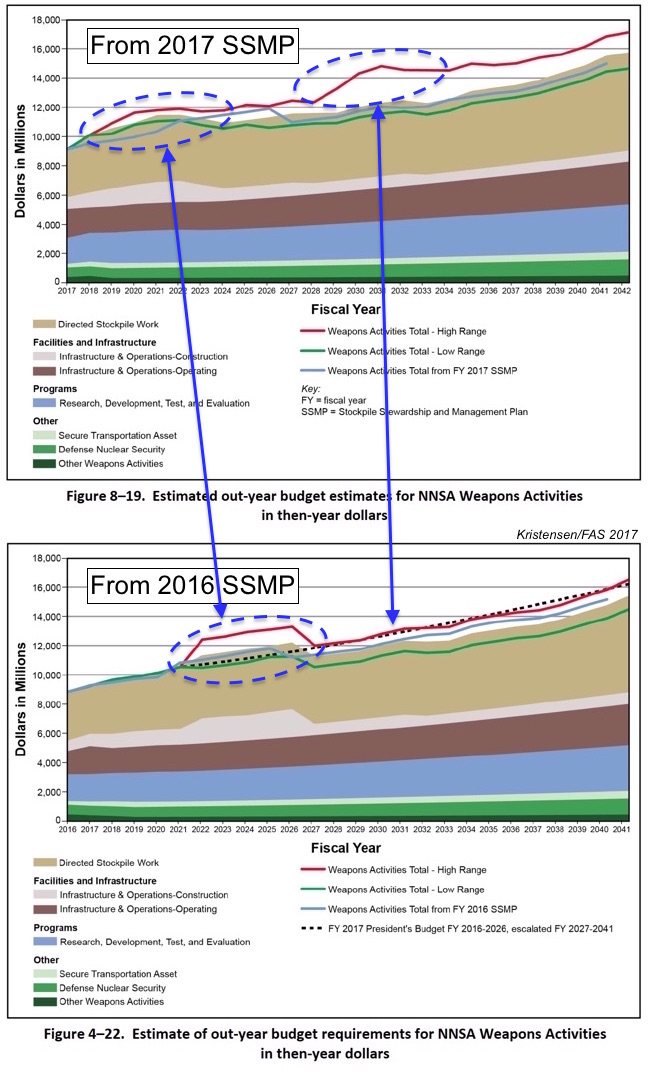
NNSA has restructure LEP spending plan so it moves “bow wave” up earlier, creates new bow wave later, and increases overall long-term costs.
It will take more time to analyze the data but a first impression is that NNSA has reorganized the projected costs so that the bow wave shown in the 2016 SSMP to appear in the 2020s now has been spread out and moved up so that it begins almost immediately and ends in the mid-2020s. Moreover, the graph shows a new high-range estimate cost emerging in the late-2020s and with significantly higher projections through 2042.
As part of that projection, all of NNSA’s LEPs high-end cost estimates appear to have increased, and there are still funding gaps toward the end of some of the programs, a budgeting problem that has previously been pointed out by GAO.
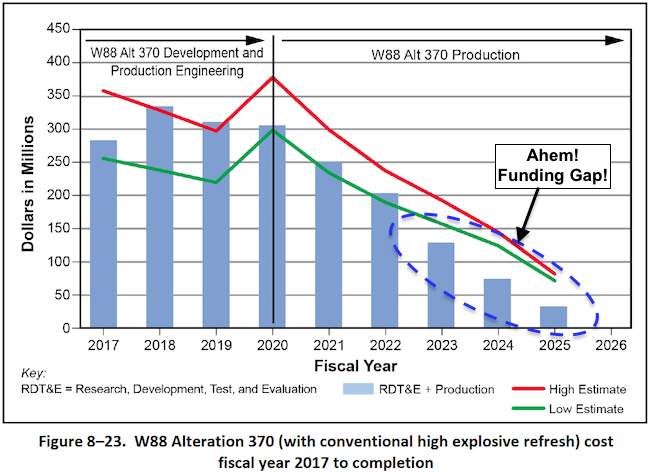
Some LEP programs appear to have insufficient funding.
And if you think the $10 billion B61-12 program is expensive, just check out the high-end cost estimate for the next B61 LEP (known as B61-13): a whopping $13.7 billion to $26.3 billion. Combined, in NNSA’s illustration, all the LEPs add up to $1.4 billion in 2017, increasing to nearly $2 billion per year in 2021-2037, and then ballooning to more than $2.8 billion per year by 2041.
Production Infrastructure
The 2017 SSMP also includes some interesting information about the production complex capacity, not least the planned production of plutonium pits at Los Alamos National Laboratory. Production is scheduled to increase from four pits in 2018 to 10 in 2024, 20 in 2025, 30 in 2026, and build capacity to produce 50-80 pits per year by 2030.
Later in the SSMP (p. A-10), it turns out the requirement for the 10, 20, and 30 pits in 2024, 2025, and 2026, respectively, actually is to produce “not less than” those numbers. And the requirement for 2030 is no less than 80 pits.
All of this of course hinges on if and how NNSA can complete the construction of the expensive production facilities needed.
Testing
The 2017 SSMP concludes that “there is no current requirement to conduct an underground nuclear test to maintain certification of any nuclear warhead.” That is good news. The 1993 Presidential Decision Directive (PDD-15, “Stockpile Stewardship”) directed NNSA to maintain the capability to conduct a nuclear test within 24 to 36 months, just in case a test was needed in the future.
But the 2017 SSMP states that NNSA has changed its assessment of what that guidance means and says “the fundamental approach taken to achieve test readiness has also changed.” Unlike the 2016 SSMP, the 2017 SSMP introduces a much shorter readiness timeline for a simple test:
- 6 to 10 months for a simple test, with waivers and simplified processes;
- 24 to 36 months for a fully instrumented test to address stockpile needs with the existing stockpile;
- 60 months for a test to develop a new capability
This reassessment of the test readiness requirement appears to erode the US commitment to the testing moratorium. And it implies that NNSA is anticipating that future and more complex LEPs might potentially require “a simple test” with a nuclear yield. Such a test would be devastating to the international security environment and trigger a wave of nuclear tests in other nuclear-armed states.
For now, warhead development and surveillance rely on subcritical hydrodynamic tests, which are gradually becoming more complex and using more fissile material. The 2017 SSMP describes work is underway to develop an operational “enhanced capability” for subcritical experiments by the mid 2020s.
There were seven “integrated hydrodynamic experiments” conducted in 2016, including for what the SSMP describes as “stockpile options.” These options appear to be different from the known LEPs and stockpile maintenance efforts.
Conclusions and Recommendations
This is not even a Trump SSMP. The document describes the program of record: the maintenance and modernization plan initiated by the Obama administration. Yet in setting the policy framework for the 2017 SSMP, NNSA invokes president Trump’s January 2017 memorandum (NSPM-1) on rebuilding the armed forces to conduct a “new Nuclear Posture Review to ensure that the U.S. nuclear deterrent is modern, robust, flexible, resilient, ready, and appropriately tailored to deter 21st-century threats and reassure our allies.”
This formulation is different and much broader than the requirement listed in the 2016 SSMP, which required NNSA to “maintaining the safety, security, and effectiveness of the nuclear stockpile.”
From NSPM-1, the 2017 SSMP highlight an overall intension “to pursue peace through strength” and “give the President and the Secretary [of Defense] maximum strategic flexibility.”
“Maximum” is a dangerous requirement because it can be used to justify pursuit of all sorts of enhancements for the sake of improved capability. “Sufficient” is a much better word because it forces planners to think about how much is enough and balance this against other realities and requirements.
The Trump administration’s Nuclear Posture Review expected at the turn of the year will mainly be focused on implementing the main elements of the Obama administration’s nuclear modernization program, but it is also considering new weapons and modified warheads.
And the tone describing the international environment will certainly darken. In describing the strategic context, the 2017 SSMP unfortunately makes the usual mistake of lumping Russia in among the countries that are “expanding” their nuclear arsenals. In terms of the total number of launchers and warheads, that is not the case.
NNSA’s nuclear warhead modernization plan forms part of a boarder nuclear modernization plan that is unaffordable as currently designed. The Congressional Budget Office recently presented options for how to reduce the costs. Several of those options include scaling back or canceling warhead programs, options that NNSA should actively consider.
Modifying requirements and scaling back ambitions can have considerable effects on what the Nation gets in return for its investments. Consider for example that the complex $10 billion B61-12 LEP only adds 20 years of life for 480 warheads, while the simpler $4 billion W76-1 LEP adds 30 years of life for 1,600 warheads.
The early retirement of the B61-10, moreover, raises obvious questions about why some of the other “consolidation” versions (B61-3, -4, and -7) cannot also be retired early. Moreover, many B83s currently maintained in the stockpile could probably be retired early as well and dismantled.
On dismantlement, the 2017 SSMP is a clear step back. The requirement in the 2016 SSMP to accelerate dismantlement of warheads retired prior to 2009 has been deleted from the 2017 update. And while funding for dismantlement in the 2016 SSMP was increased to two percent of the directed stockpile budget, the 2017 report reduces the budget for warhead dismantlement and disposition to only one percent. Completion of dismantlement of warheads retired prior to 2009 is scheduled for September 2022 – one year later than the deadline listed in the 2016 SSMP. But the 2017 SSMP doesn’t even address what the plan is for dismantling the backlog of the roughly 1,000 warheads that have been retired after 2009.
While dismantlement is not a priority for NNSA or defense planners who are focused on modernization, it is an important and powerful message to the international community that the United States is not only modernizing but actually also scrapping nuclear weapons. After all, with no new arms control treaty to replace New START (not even negotiations), an INF treaty that is close to collapsing, rejection of the Ban Treaty, and rampant modernization programs underway to extend the nuclear era through the rest of this century, what else do we (and the other P5s) have to show at the nuclear Nonproliferation Treaty review conference in 2020?
This publication was made possible by a grant from the Carnegie Corporation of New York, the New Land Foundation, and the Ploughshares Fund. The statements made and views expressed are solely the responsibility of the author.
‘Small Hands’ Don’t Like Small Nuclear Arsenals

By Hans M. Kristensen
According to an NBC News report, President Donald Trump said during a meeting at the Pentagon on July 20 that “he wanted what amounted to a nearly tenfold increase in the U.S. nuclear arsenal,” according to three officials who were in the room.
Trump’s statement came in response to a chart shown during the meeting on the history of the U.S. and Russia’s nuclear capabilities. Trump reportedly referenced the highest number on the chart – about 32,000 in the late 1960s – and “told his team he wanted the U.S. to have that many now, officials said.”
It is often a mystery how Trump reaches his conclusions and his statement about increasing the arsenal is clearly not based on rational reasoning or factual information. Presidential advisors at the meeting reportedly explained why an expansion was not feasible (that must have been an embarrassing moment) and officials said his comments “raised questions about his familiarity with the nuclear posture and other issues.”
Despite Trump’s fantasies, the United States is unlikely to increase its nuclear weapons stockpile. There are currently about 4,000 nuclear warheads in the Pentagon’s stockpile, of which roughly 1,800 are deployed on ballistic missiles and at bomber and fighter bases. The military says it has too many and could meet national and international commitments with up to one-third fewer deployed weapons. And the trend is that the stockpile will continue to decline over the next decade because of changes being made to the force structure as part of the current modernization program.
Fun facts added: The biggest stockpile increase in one year was 1959-1960 when the United States added 6,340 warheads. During the 72 years since the first production of nuclear weapons in 1945, the average number of nuclear weapons added to the U.S. stockpile per year is 56. At that rate, it would take 487 years to increase the stockpile to the peak of 31,255 warheads in 1967.
Yet Trump’s repeated statements demonstrate a predisposition toward more nuclear weapons. The big question is to what extent that will influence the Nuclear Posture Review (NPR) currently under preparation. Trump might try to slow the reduction and force the military to hang on to excess warheads even though they don’t need them or want them.
More likely is that Trump with the NPR will try to further increase the capabilities of the remaining weapon types. Again, enhancements are already being added as part of the ongoing modernization programs, but there are people involved in the NPR process that are advocating doing more. The White House apparently is in favor of researching and developing a ground-launched missile that, if tested and deployed, would violate the INF treaty (this is a Cold War tit-for-tat response to Russia’s violation of the treaty).
Despite current challenges to the international nuclear weapons arms control efforts, it is essential that the Trump administration reaffirms long-standing U.S. nuclear policy to reduce nuclear arsenals and work toward the eventual elimination of nuclear weapons. Doing otherwise might satisfy defense hawks with no gain for national security, but it would also embolden other nuclear-armed states to further increase their arsenals to the detriment of the security of the United States and its allies.
Background:
This publication was made possible by a grant from the Carnegie Corporation of New York, the New Land Foundation, and the Ploughshares Fund. The statements made and views expressed are solely the responsibility of the author.
